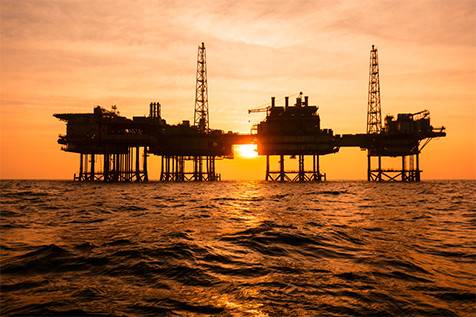In a surprising development, Argentina, the second-largest economy in South America, has recently emerged as the continent’s third-largest oil producer. The boom in unconventional hydrocarbons production from the Vaca Muerta formation—one of the world’s five largest shale reserves—is driving significant growth in oil and natural gas output. State-owned energy company YPF is leading the development of this shale field, transforming into one of the most efficiently managed state-run energy firms in Latin America. Despite being nationalized in April 2012, YPF’s hydrocarbon production has continued to rise while operating costs declined, sharply boosting both its profits and profitability.
Following former president Cristina Fernández de Kirchner’s forced takeover of a 51% stake in YPF from Spanish energy giant Repsol in 2012, the company’s shares collapsed, losing three-quarters of their value as investor confidence was severely damaged. At the time, concerns mounted that Argentina’s financial and economic troubles could weigh heavily on the company. Surprisingly, that scenario did not materialize. Instead, YPF took the lead in developing the Vaca Muerta field, which covers 8.6 million acres. Although discovered in 1927, it was not fully assessed until 2011.
One of the main reasons for the delay in developing the formation was Repsol’s reluctance to commit major investments to exploration in Argentina, due to strict regulations that heavily squeezed profitability. Against this backdrop, the government decided to nationalize YPF to address its energy shortfall and reduce the country’s large trade deficit.
Buenos Aires has long seen Vaca Muerta’s reserves as a strategic opportunity to revive its struggling economy. The formation is estimated to hold about 16 billion barrels of recoverable shale oil and 308 trillion cubic feet of natural gas, making it the world’s second-largest shale gas resource and fourth-largest shale oil resource. It is also the largest unconventional hydrocarbons reservoir in South America.
At first, Vaca Muerta was compared with the US Eagle Ford formation. But extensive development proved it rivals the best shale plays globally, with analysts even likening it to the US Permian Basin, America’s largest oil field producing around six million barrels per day. Industry experts highlight Vaca Muerta’s high reservoir pressure and superior rock thickness, qualities that make it even more attractive than many US formations.
According to Argentina’s Ministry of Economy, Vaca Muerta is the largest shale-producing area in South America and one of the leading unconventional reserves worldwide. In the first half of 2025, it produced an average of 449,299 barrels per day of shale oil and 2.8 billion cubic feet per day of shale gas. These volumes alone—excluding conventional output—surpass the oil production of many South American countries.
YPF benefited early by securing the best assets in Vaca Muerta at a time when private firms remained cautious over expropriation risks and economic volatility. As a result, the national company today is the leading oil and gas producer in the formation.
Official data shows that in the first half of 2025, YPF produced 243,183 barrels per day of shale oil and 695 million cubic feet per day of shale gas, up 18% and 7% year-on-year respectively. Total production reached 343,228 barrels per day of crude oil (71% from shale) and 904 million cubic feet per day of natural gas (77% from shale). This means YPF accounts for 46% of Argentina’s oil production and 29% of its natural gas.
By 2024, YPF had proven reserves of 1.1 billion barrels of hydrocarbons, with shale oil representing 78% (854 million barrels). The reserves were divided into 56% crude oil, 44% natural gas, and 6% natural gas liquids, with an overall reserve life of 5.6 years. Vaca Muerta reserves alone are expected to last 8.3 years. The company’s proven reserves grew 19% over the past five years, with shale oil reserves nearly doubling since 2020. YPF plans to invest $5 billion in 2025, including $3.6 billion for exploration and production, mostly in Vaca Muerta, as part of a $36 billion five-year plan beginning in 2025, with about 80% allocated to exploration and production. The company also intends to divest stakes in 16 conventional oil concessions to focus on developing the shale formation.
What makes Vaca Muerta attractive to companies is its low breakeven price of $36 per barrel, far below production costs at Argentina’s conventional fields ($55–75 per barrel). YPF’s total lifting cost in Q2 2025 stood at $15.30 per barrel, but only $4.60 for its Vaca Muerta operations. The company expects this to fall to $5 per barrel by 2027 as it transitions to almost entirely shale-based production. CEO Horacio Marín stated that the company’s Vaca Muerta operations are profitable at Brent crude prices of $40 per barrel.
YPF projects production to reach 2.1 million barrels of oil equivalent per day by 2030, including 820,000 barrels of oil, 1.1 million barrels of oil equivalent of natural gas, and 170,000 barrels per day of natural gas liquids. Around 48% of the oil and 40% of the gas are expected to be exported. The company also forecasts operating EBITDA to rise from $5.3 billion in 2025 to $11 billion in 2029, with free cash flow doubling to $3.1 billion.
This growth has turned YPF into one of South America’s most prominent state-owned energy companies, benefiting from the Vaca Muerta boom and expanded energy infrastructure. It is also a major achievement for Argentina’s economy, helping boost exports and reduce imports, thereby lowering the risk of trade deficits. Government data shows oil exports reached $5.5 billion in 2024, a 41% increase from 2023, contributing to a $19 billion trade surplus compared with a $7 billion deficit the year before.


